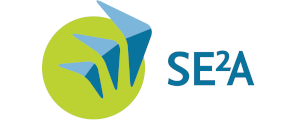
Who are you and what is your research topic?
My name is Daniel Simanowitsch and I finished my Masters in Engineering Science at
the Technical University of Berlin. I moved to Göttingen to research on the topic of
transition prediction and optimization on fully 3D boundary layer flows at the DLR
(Deutsches Zentrum für Luft- und Raumfahrt).
Which research question are you working on?
The big question is how to predict and reduce drag on airplanes. The challenge is to
develop a numerical tool chain that will be able to predict the transition from turbulent
to laminar flow for example on a Blended-Wing-Body. Once the prediction is possible,
I will research how to optimize e.g. the shape of the body, or control mechanisms, to
delay the transition. This is the main focus of my work. The full tool chain should also
be able to simulate the flow around the body itself, so that the resulting framework will
be able to first simulate the flow, then predict the transition, assess how to delay it,
simulate the accordingly changed flow and repeat this whole process until an optimum
is reached.
What makes this topic special/exciting for you?
The project offers the possibility to work on the aviation of the future, making it more
efficient and greener. Working with a numerically and mathematically demanding
project is challenging, but rewarding, and what I was looking for after graduation.
Transition prediction and delay is a complicated area with high potential. Seeing one’s
own research perhaps put to the test one day makes it exciting.
Why is your topic relevant for future aviation?
Aerial traffic is a big source of environmental pollution. Increasing its efficiency, even
by a small margin, can have a high positive impact. Developing the infrastructure and
know-how for future aviation concepts, like Blended-Wing-Bodies, is a must for that
purpose. Predicting and delaying transition on an airplane like this, hereby reducing
frictional drag and thus fuel consumption, will hopefully facilitate their integration into
the air traffic of the future.
What is special about participating in the interdisciplinary research network SE²A?
Working in an interdisciplinary network connects researchers with different
backgrounds and manifold topics. The exchange with them uncovers potential for joint
research, hereby e.g. connecting numerical and experimental problems. Also, SE2A
organizes meetups, seminars and retreats as easy way to get in touch with colleagues
and farther one’s knowledge. The amount of expertise inside the network is huge and
that makes discussing problems much more interesting and fruitful.

Exzellenzcluster SE²A –
Sustainable and Energy-Efficient Aviation
Technische Universität Braunschweig
Hermann-Blenk-Str. 42
38108 Braunschweig
se2a(at)tu-braunschweig.de
+49 531 391 66661
